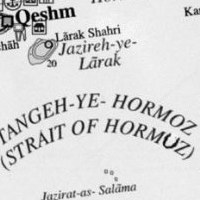![]()
Tue, June 22, 2010 | Tabletmag | By Tony Badran
Syrian President Bashar al-Assad said in his Damascus speech on Wednesday [March 30, 2011] that foreign conspirators are responsible for the ongoing anti-government protests. He also said that they are meant to “fragment and bring down Syria” and “enforce an Israeli agenda.”
In his speech he said that
“Syria is a target of a big plot from outside, both internally and externally. If there is something happening it is using the cover of accusing Syria of popular response. If there are reformers we will support them. Those people have a mixed and confused intellectual ways.”
“The plotters are the minority…we didn’t know what had happened until the sabotage operations had happened, since then we could see the difference between reform and killing. We are for people’s demands but we cannot support chaos and destruction,” al-Assad said.
Bashar al-Assad knows how to survive this latest unrest in his country: he’s playing the “anti-American, anti-Israel” card. Tony Badran wrote an article about Assad’s position and tactics in the Middle East. A must read:
Syriana
Bashar al-Assad has maintained his country’s key position in Mideast politics by drawing out the peace process and turning it into warfare by other means.
In the annals of “big policy ideas,” perhaps none has had as much staying power in the face of a dismal track record than the seemingly perpetual conviction that integrating Syria into the pro-American order in the Middle East is a real, achievable possibility. The ultimate authority invoked in support of the idea that Syria is the keystone for stability in the region is usually Henry Kissinger, the arch-realist of American foreign policy, who is said to have said, “You can’t make war in the Middle East without Egypt and you can’t make peace without Syria.”
With the exception of a brief suspension during the George W. Bush presidency, the notion of Syrian centrality has dominated U.S. thinking — and often Israeli thinking — about the Middle East, and the Obama Administration is no exception. The idea that it is important to appease Syria at all costs appears to be behind the lack of any notable response to recent reports indicating that Syria may have passed Scud-D ballistic missiles to Hezbollah in Lebanon. This dangerous development comes after a tripartite summit in Damascus between the leaders of Iran, Syria, and Hezbollah in February at which the Syrian and Iranian presidents openly mocked Secretary of State Hillary Clinton and her comment about wanting to see Syria distance itself from Iran. Instead, Damascus and Tehran waived visa requirements between their two countries.
The model for what U.S. and Israeli policymakers hope from Syria is the Camp David accord with Egypt, which established what some refer to as the “Pax Americana” in the Middle East. The Egyptian model was and remains the premise behind approaching Syria, as was evident during Assistant Secretary of State for Near Eastern Affairs Jeffrey Feltman’s testimony before the House Subcommittee on the Middle East and South Asia in April, when Rep. Dana Rohrbacher wondered in his remarks what it would take to turn Syria around to becoming a more moderate Arab country “like Jordan or Egypt.”
While Cold War efforts to remove Syria from the Soviet orbit failed, a similar, enduring subplot has emerged regarding its 30-year-old alliance with Iran. The ubiquitous argument was summarized in a 2009 essay by Richard Haass and Martin Indyk in Foreign Affairs:
Syria is the principal conduit for Iran’s influence in Lebanon and the Palestinian territories. Israeli-Syrian negotiations threaten to sever these ties. Drawing Syria away from Iran would also deprive Tehran and its Hamas and Hezbollah proxies of a critical ally. Such a strategic realignment would weaken Iran’s influence in the region, reduce external support for both Hamas and Hezbollah, and improve the prospects for stability in Lebanon. A U.S.-brokered peace between Israel and Syria would remove Damascus as an enemy and, in the process, likely cause the breakup of the Iranian-Syrian alliance.
Advocates for pursuing Haass and Indyk’s recommendation include a list of revered former officials, often identified as Realists, such as former Secretary of State James Baker, former national security advisers like Brent Scowcroft and Zbigniew Brzezinski, a coterie of former ambassadors and peace processors, not to mention a host of policy mavens in the think-tank world.
Their argument rests on a basic linkage theory, which, incidentally, also accepts key aspects of the Syrian official line: The problems in the region are related, and they revolve around the Arab-Israeli conflict and Israel’s occupation of Arab lands.
In this conceptual universe, Syria is at the center of the conflict. A weak country, unable to match Israeli power and American penetration of the region, it struck a realist, defensive alliance with Iran as well as with non-state actors Hamas and Hezbollah in order to avoid isolation, but also to gather assets to pressure Israel and the United States to the negotiation table to recover the Golan Heights. In doing so, Syria manages to frustrate any regional deals that ignore its interests. Therefore, any deal in the region has to be “comprehensive,” i.e., involving the Syrians. After all, you cannot make peace without Syria, as the adage has it.
Another part of the idea that Syria is the key to regional peace, and can be won over to the West, has to do with the nature of Syria’s rulers. The Assads — who have ruled Syria since 1970 — aren’t ideological, like Iran, the theory goes, but are secular and pragmatic horse traders. As former Secretary of State James Baker, one of the ardent supporters of this worldview, put it, “a deal is there to be had.”
Once the Syrians get what they want, Baker and his cohort believe, they will become more cooperative, leading to at least a reformulation of their ties to Iran and allied militant groups. Syria will ultimately embrace the West, they believe, because Iran cannot satisfy Syria’s serious economic woes. Only the West can offer Syria the investments it needs. This gives rise to other convictions about Assad himself, who is portrayed as a secular modernizer who, in the words of Brent Scowcroft, “cannot be comfortable clutched solely in the embrace of Iran.”
Secretary of State Clinton made this premise explicit at a hearing before the Senate Foreign Relations Committee, on the heels of a trip to Damascus by William Burns, the undersecretary of state for political affairs: “We have laid out for the Syrians the need for a resumption of the Israeli/Syrian track on the peace process, which had been proceeding through the offices of the Turks, and generally to begin to move away from the relationship with Iran, which is so deeply troubling to the region as well as to the United States.”
Assad’s reaction was swift and unambiguous: He hosted a tripartite summit with Iran’s president Mahmoud Ahmadinejad and Hezbollah Secretary General Hassan Nasrallah during which Assad and Ahmadinejad specifically ridiculed Clinton’s statement. Assad told reporters he and Ahmadinejad “misunderstood” Clinton’s comments, “maybe because of translation error or limited understanding.” Instead, he said, Syria and Iran signed an agreement canceling visa requirements between their countries. Ahmadinejad piled it on: “Clinton said we should maintain a distance. I say there is no distance between Iran and Syria. We have the same goals, same interests and same enemies. Our circle of cooperation is expanding day after day.”
Assad’s rhetorical slight was matched by his escalating transfer of advanced weaponry to Hezbollah, namely anti-aircraft systems and long-range missiles, culminating in the recent Scud crisis.
Given the conceptual framework within which the Administration is operating, it was unsurprising that the reaction to Assad’s behavior was one of befuddled confusion. Deputy Secretary of State James Steinberg shrugged off the Damascus summit as “theater.” Optimists even saw it as evidence of Iranian “insecurity” and “nervousness.”
After the reports of Scud missile transfers from Syria to Hezbollah, Assistant Secretary of State Jeffrey Feltman offered the following commentary on the Damascus summit to the Lebanese daily An-Nahar:
“First, it seems that there is a pattern, as I mentioned in the [House] hearing, that after every visit [to Syria] by a U.S. or Western official, an Iranian official visits Damascus, or a Syrian official visits Tehran. I don’t know what this pattern means, but it could signify some very important things.”
Feltman had made the same observation during a stormy hearing of the House Subcommittee on the Middle East and South Asia a few days earlier, in response to a remark by Rep. Dan Burton, who described Assad’s summit with Ahmadinejad as “spit in our face.” Feltman retorted that the pattern suggests that the Iranians are worried or that something was going on behind the scenes. He neglected to mention that this same pattern has been going on for 30 years, without any real impact on the endurance of the Syrian-Iranian alliance, which seems as solid as — if not more solid than — it has ever been.
The fact that the Administration’s hopeful understanding of Syrian motivations fails to make sense of actual Syrian behavior has not been lost on U.S. policymakers, who nevertheless seem stuck in the same old box. As one official told Foreign Policy’s Josh Rogin, “We do not understand Syrian intentions. No one does, and until we get to that question we can never get to the root of the problem. Until then it’s all damage control.” Why Assad behaves the way he does was dubbed “the million-dollar question” by the same official.
Read full article here: Tablet Magazine.
Tony Badran is a research fellow at the Foundation for Defense of Democracies [20] specializing in Hezbollah, Lebanon, and Syria.



 RSS
RSS











Syriana | #Syria #Assad #Israel http://j.mp/f2OMCC
RT @CrethiPlethi: Syriana | #Syria #Assad #Israel http://j.mp/f2OMCC